by Wallace Wyss –
I think, after working for Motor Trend at two different points in time, that I gained a certain amount of sophistication.
Maybe not.
I remember around 1972 or so when the Pantera was already being talked about being discontinued, Motor Trend was talked by the Ford PR man (I think it was Owen Bombard, a slick talker if there ever was one) into doing a campaign to “save the Pantera.”
We already knew the Pantera had been cancelled. We naively though maybe if the readers wrote letters we could save it.
Maybe only the editor knew the true story–that Ford had become so ticked off at Alejandro deTomaso that they had stopped ordering the cars and saved only the Ghia coachbuilding side to build Ford prototypes. But the readers thought, if we write in and vote for this new Pantera design, the 7X, then the car will be saved.
Hey, looking back, maybe the whole deal was only to sell magazines. The magazine was alleging that the 7X (the “X” supposed to represent what model year it would be) was built as a proposal for a future Pantera that would meet bumper and visibility laws. And Road & Track, at the time, was much too staid to go out on a limb to save a car. It’s what made us more lovable.
First a little background…
A “MEET CUTE” CREATES A CAR COMPANY
The way the Pantera came about was so convoluted a story, you have to stick with us on the curves. Alejandro de Tomaso was an Argentine living in Italy, trying to make it as a race driver when he met (at the Maserati parts counter) one Isabella Haskell, a tall blonde who came, as they delicately said at the time, “from money.” This was a “meet cute” right out of the Hollywood movies, where a couple accidentally meet and find they have the same interests.
They married, raced Maseratis and OSCAs together and, starting in 1959, began building race cars under their own name. The first production car was the Ford-powered mid-engined Vallelunga, of which 52 were made.
Somehow, through his legendary wheeling and dealing, DeTomaso bought a famous Italian coachbuilder, Ghia, and began building a much more aggressive looking V8 powered sports car, the Mangusta (below), with styling by the incomparable Giorgetto Giugiaro, then a youthful designer without the legendary reputation he has today.
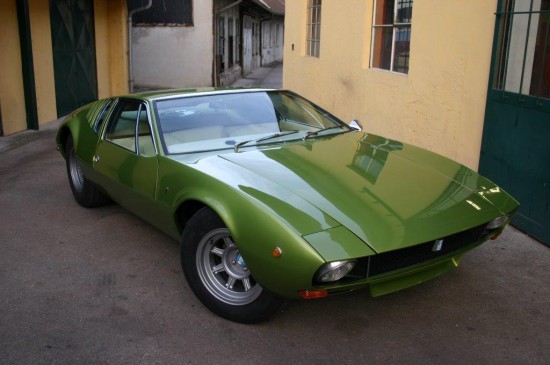
De Tomaso Mangusta
Ford Motor Co’s, chief designer at the time, Eugene Bordinat, became so intrigued with the Mangusta that he bought one. For himself. He pushed for Ford to import the car in much the same way as Ford had earlier backed Texan entrepreneur Carroll Shelby with his Cobra. But after a team of Ford designers went to Italy and saw how shoddy the Mangustas were built, Ford changed their mind and told DeTomaso something to the effect of: “If you come up with a car that can be easier built, let us know.”
DON’T LET THEM LEAVE EMPTY-HANDED
As it turned out, DeTomaso already had a follow-up design to show them, though in the form of a wooden model only 1/5th scale. Giugiaro had left Ghia Carrozzeria before the Ford visit to start his own design firm (Ital Design) and so DeTomaso had assigned an American working in Italy for Ghia, Tom Tjaarda, to design the replacement car.
When the Ford people visited, the Ford representatives, afraid to go home and tell their Uber-boss, Henry Ford II, an Italian car fan, that they hadn’t come back with a car, they ordered the follow up car anyhow before the first one was built and tested. The original name for the car was “DeTomaso 351” but it was changed to Pantera (for “panther”) before the first one was built.
Ford planned to sell them for only $10,000, which was about $8000 less than a Ferrari Daytona but about three times more than the Corvette. True, it couldn’t catch the 175-mph Daytona but a Pantera would do at least 145 stock and with a few mods, would reach 165 mph. And a replacement 351-C (Cleveland) engine for the Pantera could be bought for the price of a set of Daytona pistons. When the Panteras began to come to America, where Ford sold them in Lincoln Mercury showrooms, it was a disaster at first as Ford had to recall the first 100 or so cars to repair the suspension but after that, Ford got it sorted out.
THE CAR IS RELIABLE AFTER AMERICAN SUGGESTED FIXES
Actually, it was the two Pantera clubs in America who diagnosed most of the car’s problems and devised solutions. Eventually, decades later, the 6,000 or so Panteras sold in the U.S. became renowned for their easy maintenance, and reliability compared to the more expensive exotic cars with exotic engines.
Right from the get-go, Ford had a tough time dealing with the mercurial DeTomaso whose attention span was measureable in nanoseconds; he was always off on another tangent, so in 1972 they already bought him out, and wound down production though the Panteras were offered to 1974 model year.
DeTomaso, through an escape clause in the contract, continued to make Panteras seemingly forever and even introduced new improved models like the GT5 and GT5-S selling them all over the world.
TJAARDA RESHAPES IT
Before Ford fell out with DeTomaso, there was a concept car designed by Tom Tjaarda intended to be the next generation Pantera. It was called the Montella or 7X, and was shown at various auto shows by Ford throughout 1974. The vehicle shared the same chassis and drivetrain from the Pantera, while incorporating a new body with many updates by Tjaarda.
The biggest difference was the rear roof which used to have blind sail panels, being changed to two flying buttresses. The nose was also changed for a blunter look, probably to cope with upcoming bumper laws.
It was later treated to a two tone paint job, Pearl While over Metallic Bronze, reportedly at the behest of Ford designer Don De La Rossa who at one time had been President of Ghia.
One report which I find difficult to believe but will repeat to see if anyone else heard it says that DeTomaso showed the vehicle to other manufacturers in hopes of putting it into production—perhaps anticipating the split with Ford, but that report doesn’t jive time-wise with the fact that Ford had bought out DeTomaso’s Pantera operation in ’72 and wouldn’t have shown the 7X if it would have been made by some other automaker. But the suggestion is ridiculous because the car was identified with Ford, and not changed enough to fool anybody even if it was sold under another brand name.
The Montella was sold to a sports car dealer in Michigan in 1981. That dealer sold it to, small world, my dentist, Dr. Fred Hamm. Who kept it up North somewhere. I think he bought it after he was my dentist but the point was that it was able to be sold in America (auto companies have a way of making that happen when they are cleaning out the barn..)
The big name classic car auctions in Scottsdale and Monterey have a way of attracting these cars out of the woodwork and the 7X appeared at the RM auction in Monterey in 2007, where it was listed with an estimated value of $90,000 – $120,000. I could scarcely believe my eyes that a prototype was being sold with no sign saying it was a factory prototype. Odds were some would think it was customized by Joe Blow of Idaho.
The car was sold, reportedly to an Italian architect who restored it with the in-person advice of its original designer, Tom Tjaarda, changing the color to a warm copper which complements the car very well.
I can’t tell you how rare it is in car collecting circles to have the privilege of having the original designer of a car available for consultation as you restore his baby as this Italian connoisseur did. I think he got a bargain at $99,000. More’s the pity for whoever put it up on the block.
First of all, anyone who had done their homework would realize this was a factory-built prototype, both by DeTomaso, Ghia and Ford so in a way it had the luxury of three pedigrees, not just one. Probably a lot of people going to the auction didn’t realize it was a prototype. And then there’s the model year. Panteras stopped being imported to the U.S. in 1974, so that makes this the only 1975 Pantera here unless you want to count gray market cars.
DeTomaso cars, because of their “low born” cast iron V8 pushrod engines, for decades, have been thought of by the high end collectors of foreign cars as not worth collecting. Too mass market. Too plentiful. But those purebred snobs made a mistake when they passed up the 7X as it represents a running, driving easily-maintained one-off car with a great story.
And I am sure Tom Tjaarda, who I met in 1970 when sent by Motor Trend to Dearborn to interview the Pantera designer, was damn proud in recent years to have one of “his cars” appear at the Villa d’Este concours where so many prototypes have appeared from other designers (notably Giugiaro).
Lesson learned: we were conned at Motor Trend but y’know, maybe if we had enough letters, we coulda gone to Ford with them but I am sure at that point they were filing anything labeled “De Tomaso” in the round file…
Let us know what you think in the Comments.
Wallace Wyss is the author of DeTomaso The Man and the Machines. Copies are still available by writing to Photojournalistpro@gmail.com – click here to connect.
This was originally published in June 2016.
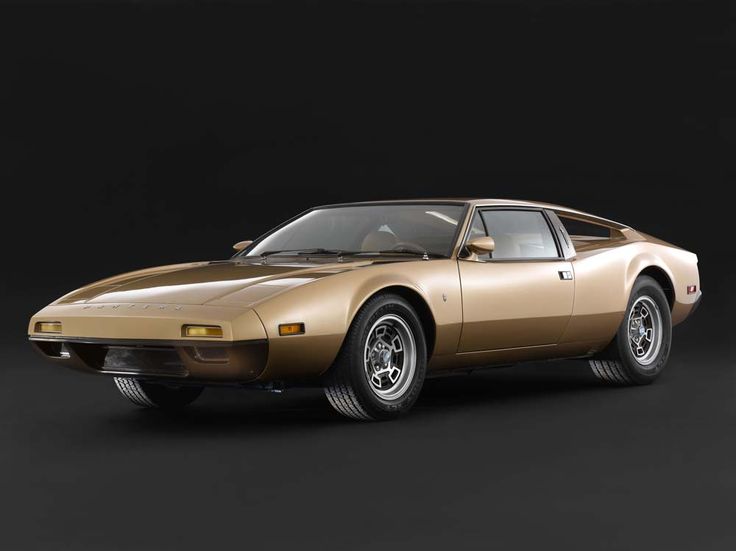
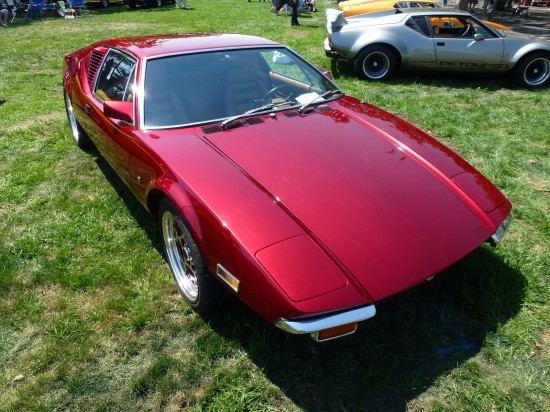
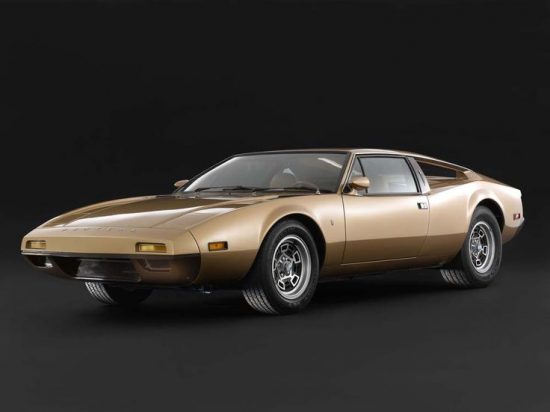
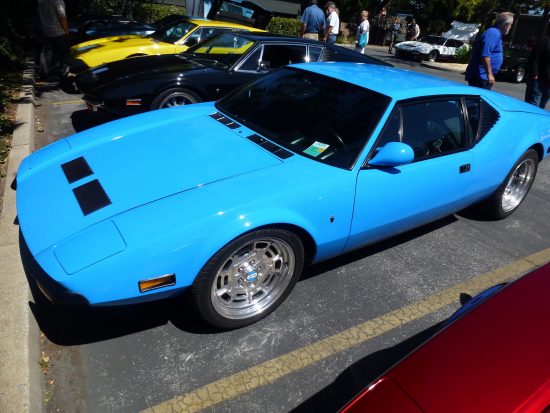
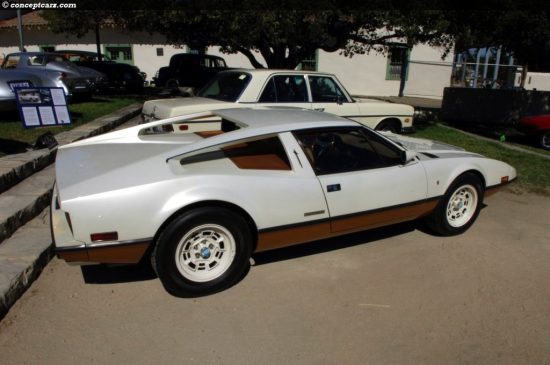
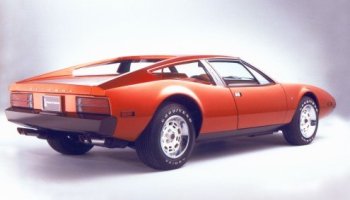
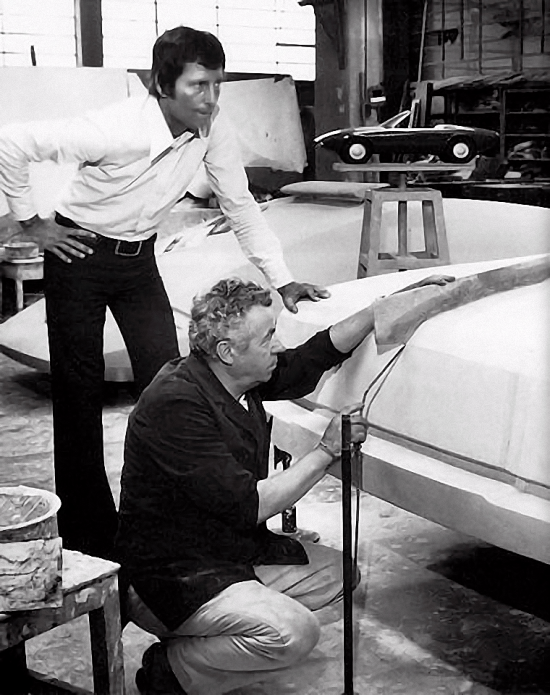

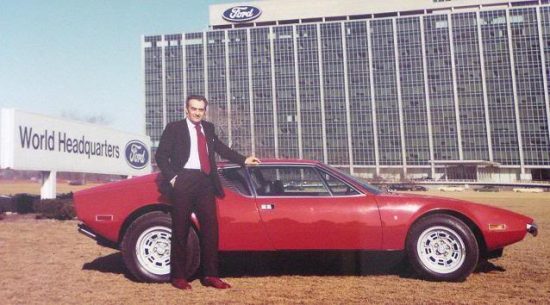



In Canada when I visit a Tim Horton coffee shop I always think of the Pantera –Tim Horton, often referred to as the strongest man in Hockey, flipped his Pantera after driving intoxicated after a game in Toronto on returning to Buffalo.
Apparently the police could not keep up as he was travelling well over 100 mph. The franchise went from 40 stores to over 4500 today with 1000 in the USA. The Horton estate sold his 50% share for $1million to his partner Ron Joyce who subsequently became a billionaire developing the franchise. Mrs. Horton lost a case that she sold at too low a price.
However, there is some consolation as Horton’s son married one of Joyce’s daughters. Tim Horton’s has more recently been sold to Burger King which is controlled by a Brazilian group.
So if you did not know any of this you can reflect on the Pantera when you have a coffee in the franchise in their
rapidly expanding shops which are now occurring in the United States.
lennox mcneely
Great article about the Pantera, never heard about the 7X before. And nice to see my green Mangusta in the article :-).
Herbert, Austria
Excellent article. Thank you for sharing.
A red Pantera made quite an impression on me as a youngster. Parked across the street from my friends house. His neighbor had one. I remember staring at it, in the drive way, just mesmerized as it was the coolest car I had ever seen. It was one of the first cars that I can remember that just enamored me. Every time I went to my friends house, I would look for that car… it was just that impressionable.
Not sure that Ford completely bought De Tomaso out. Wiki says (not that they are right) that Ford had an 85% stake in De Tomaso, the rest was owned by De Tomaso himself (and/or his brother in law, Amory Haskell Jr.). Then in 1974, Ford sold the stake back to De Tomaso. But who knows, as De Tomaso definitely kept business deals close to the cuff. We may never know the truth about any of it. Too bad too, as what a story it would be! You would get dizzy reading it. lol!
I’m in the middle of reading Wallce Wyss’ book, “De Tomaso, The Man and the Machines”. I purchased the book mainly because I was interested in De Tomaso as a maverick car manufacturer, not because I am a big Pantera fan, which I am not. But there is so much fascinating detail about the creation of the Pantera (over 100 pages) this is a must read for any Pantera fan and a great read about De Tomaso, Ford, and the collaborative politics of 1960-70’s boutique car building.
The Manusta went under an engineering evaluation by Kar-Kraft in Dearborn at the request of Ford.
They were advised of the many problems with the car that did not meet Ford standards for production and durability, but Ford went ahead anyway with the hope that DeTomaso could do better with the promised Pantera.
Here is the rare Mangusta/Ford poster.
Great article
I talked to a Ford engineer and a Ford designer who went over to Ghia to inspect how the Mangusta was built and it was mostly because it would take too much hand work. They were hornswoggled into thinking if a successor was built on a real assembly line such as at Vignale, quality would be better. At least it didn’t need so much hand finishing.
I was told at the of Ford Product Development Center Lincoln-Mercury Event in 7/2015, by at least 5 people ( L/M retired workers and the present L/M boss ) that if the Mangusta could have passed Fords assembly line protocols and quality concerns then Lincoln/Mercury was going to order about 3,300 Mangusta FROM A deTomaso. I met a worker and his boss who had the job of driving my car on the test track for doing NHV graphs. My car was invited and was a big hit because so many had not seen it since the mid 70’s as then it was owned by their design boss, E Bordinat. So the goose could not be line built and our friend Tom did the Pantera.
You said, “Hey, looking back, maybe the whole deal was only to sell magazines.”
I say, “Well, after all, it was Motor Trend”.